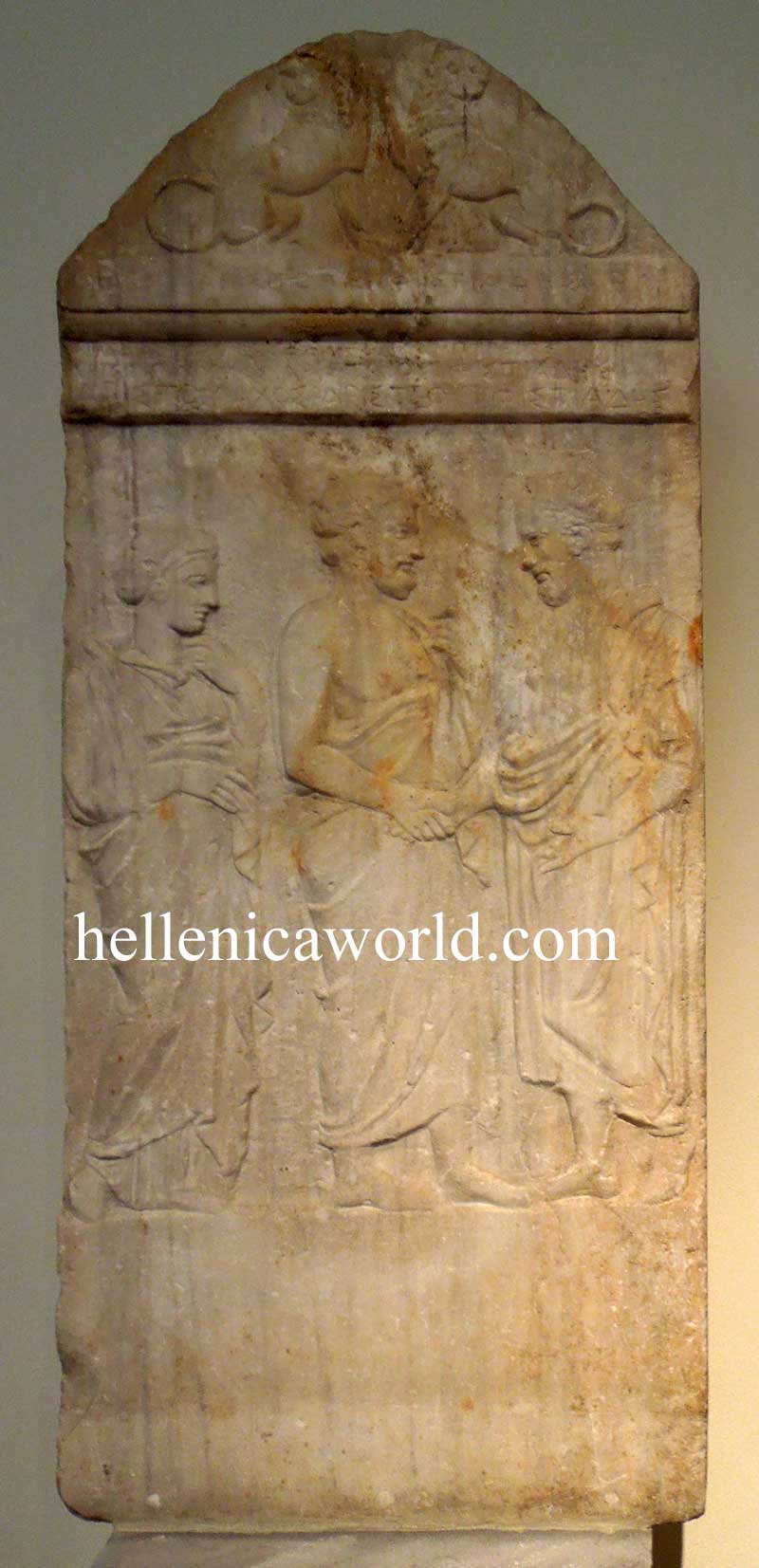Iphistiadae (Ancient Greek: Ἰφιστιάδαι, romanized: Iphistiadai) or Hephaestiadae (Ancient Greek: Ἡφαιστιάδαι, romanized: Hephaistiadai) was one of the demes, or townships of Acamantis, one of the ten phylae of Attica established by Cleisthenes at the end of the sixth century BC. It seems to have been named for Iphistius, an obscure hero, with the alternative form, Hephaestiadae, arising from the mistaken assumption that it was named after the god Hephaestus, a much more familiar figure. The two names misled the geographer William Martin Leake to identify Iphistiadae and Hephaestiadae as two separate demes. Iphistiadae is mentioned in the Ethnica of Stephanus of Byzantium, and the lexicon of Hesychius of Alexandria.[1]

Grave stele. Pentelic marble
Copyright ©. Photo : www.hellenicaworld.com
Found in Athens. Two bearded men are shown in a handshake
Behind on the left, a woman. The upper part of the stele bears
the inscribed names of four members of the family,
which originated from the ancient deme of Iphistiadai
410 - 400 B.C.
Plato owned an estate at Iphistiadae, which by will he left to a certain youth named Adeimantus, presumably a younger relative, as Plato had an elder brother or uncle by this name. Diogenes Laërtius describes the provision:
"These things have been left and devised by Plato: the estate in Iphistiadae, bounded on the north by the road from the temple at Cephisia, on the south by the temple of Heracles in Iphistiadae, on the east by the property of Archestratus of Phrearrhi, on the west by that of Philippus of Chollidae: this it shall be unlawful for anyone to sell or alienate, but it shall be the property of the boy Adeimantus to all intents and purposes ..."[2]
According to this passage, Iphistiadae was home to a Heracleion, or temple of Heracles, from which the modern municipality of Heraklion, corresponding to the location of ancient Iphistiadae, derives its name. Thus, Iphistiadae was about five miles northeast of Athens, two miles west of Athmonon (modern Marousi), and three miles southwest of Cephisia (modern Kifissia).[1][2][3][4]
References
Dictionary of Greek and Roman Geography, vol. I, p. 326 (No. 29, "Iphistiadae or Hephaestiadae").
Diogenes Laërtius, "The Life of Plato", 41.
Richard Talbert, ed. (2000). Barrington Atlas of the Greek and Roman World. Princeton University Press. p. 59, and directory notes accompanying.
Lund University. Digital Atlas of the Roman Empire.
Bibliography
Diogenes Laërtius, Lives and Opinions of Eminent Philosophers.
Dictionary of Greek and Roman Geography, William Smith, ed., Little, Brown and Company, Boston (1854).
Retrieved from "http://en.wikipedia.org/"
All text is available under the terms of the GNU Free Documentation License
| Ancient Greece
Science, Technology , Medicine , Warfare, , Biographies , Life , Cities/Places/Maps , Arts , Literature , Philosophy ,Olympics, Mythology , History , Images Medieval Greece / Byzantine Empire Science, Technology, Arts, , Warfare , Literature, Biographies, Icons, History Modern Greece Cities, Islands, Regions, Fauna/Flora ,Biographies , History , Warfare, Science/Technology, Literature, Music , Arts , Film/Actors , Sport , Fashion --- |

